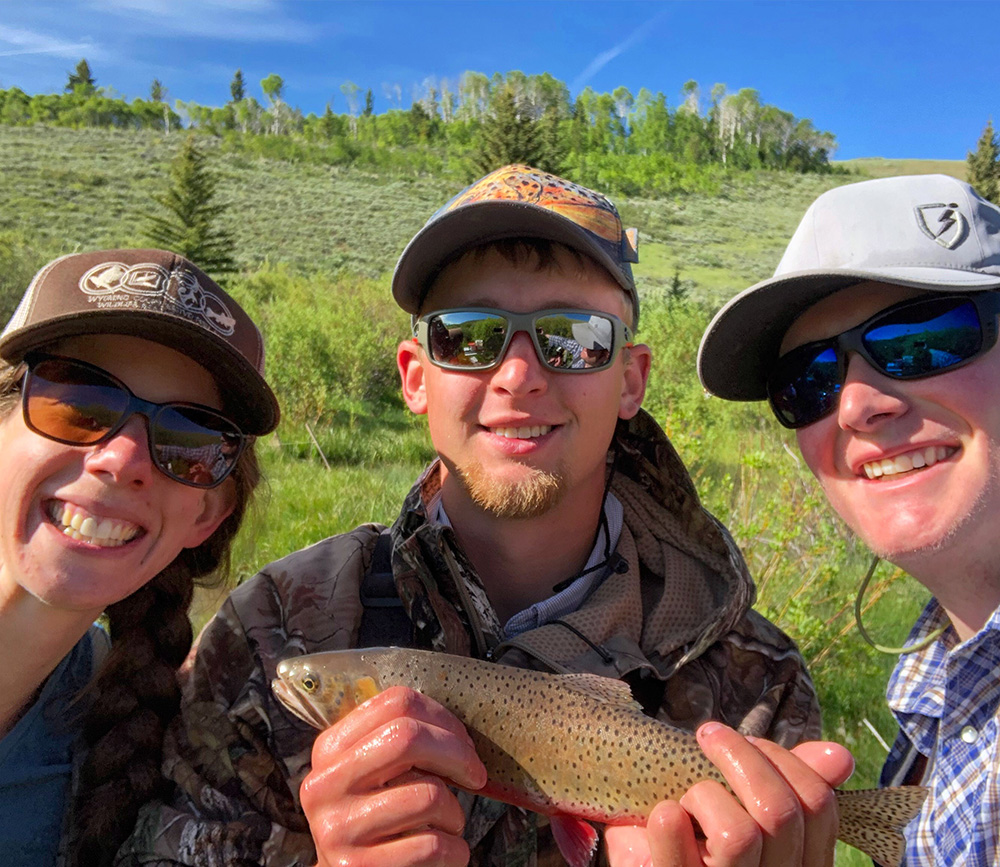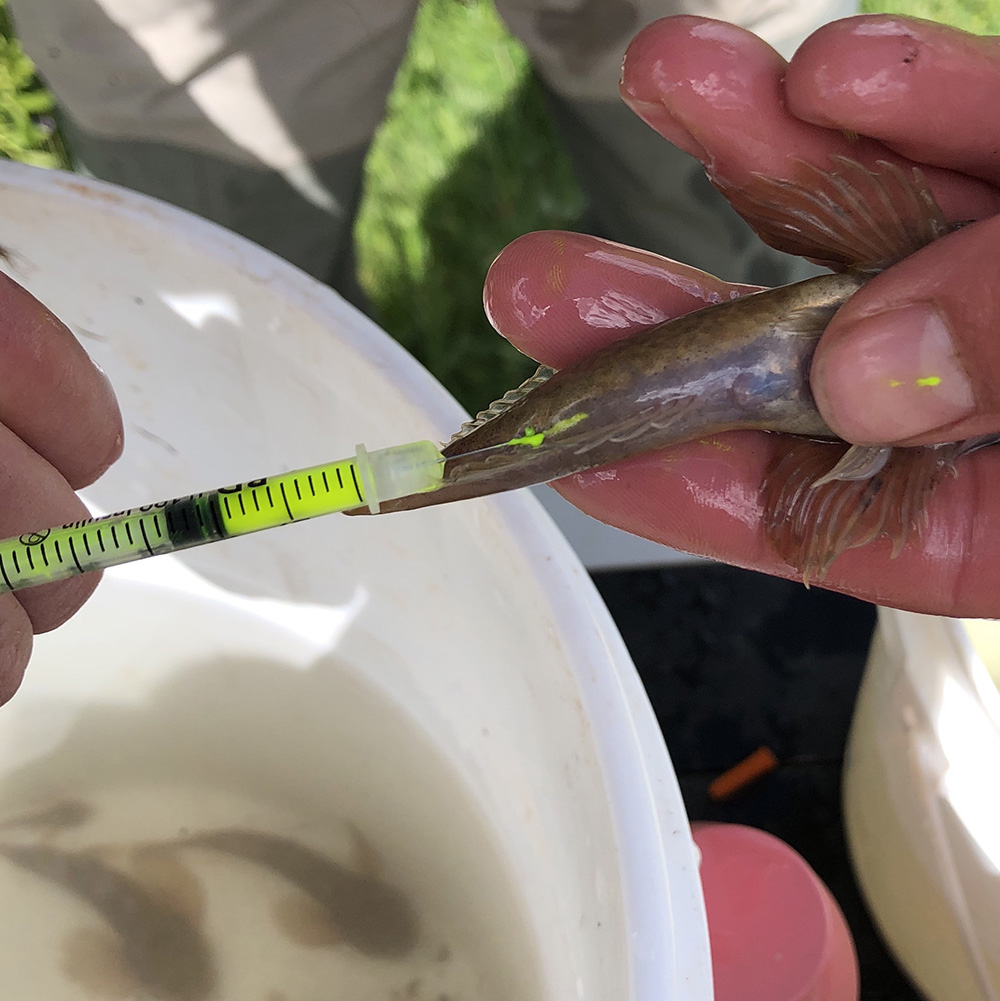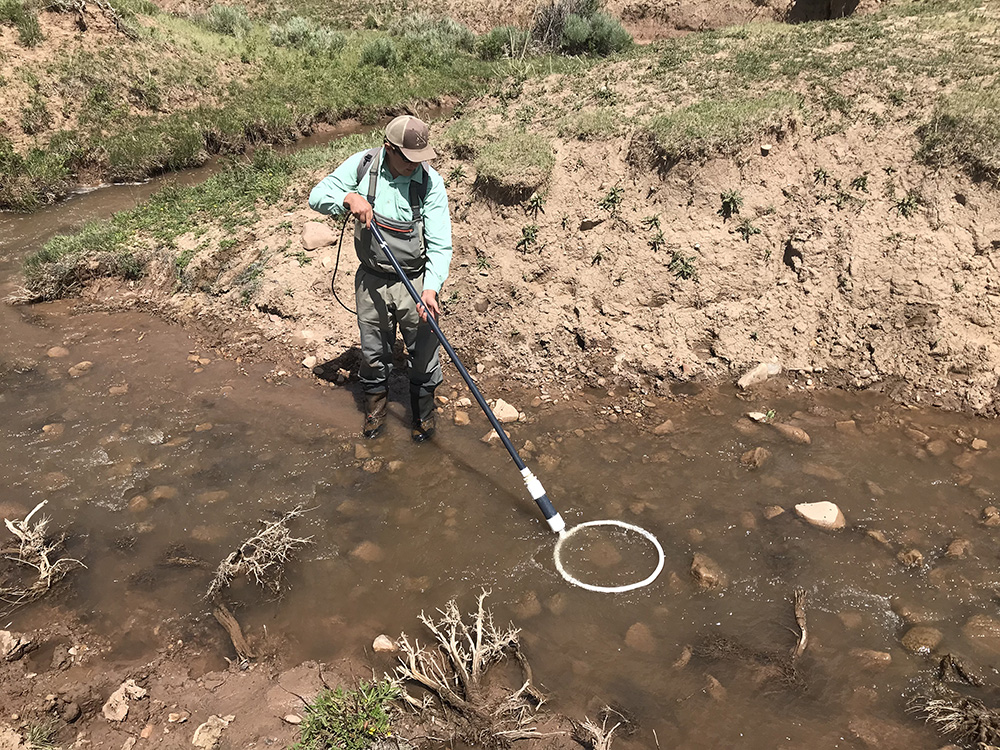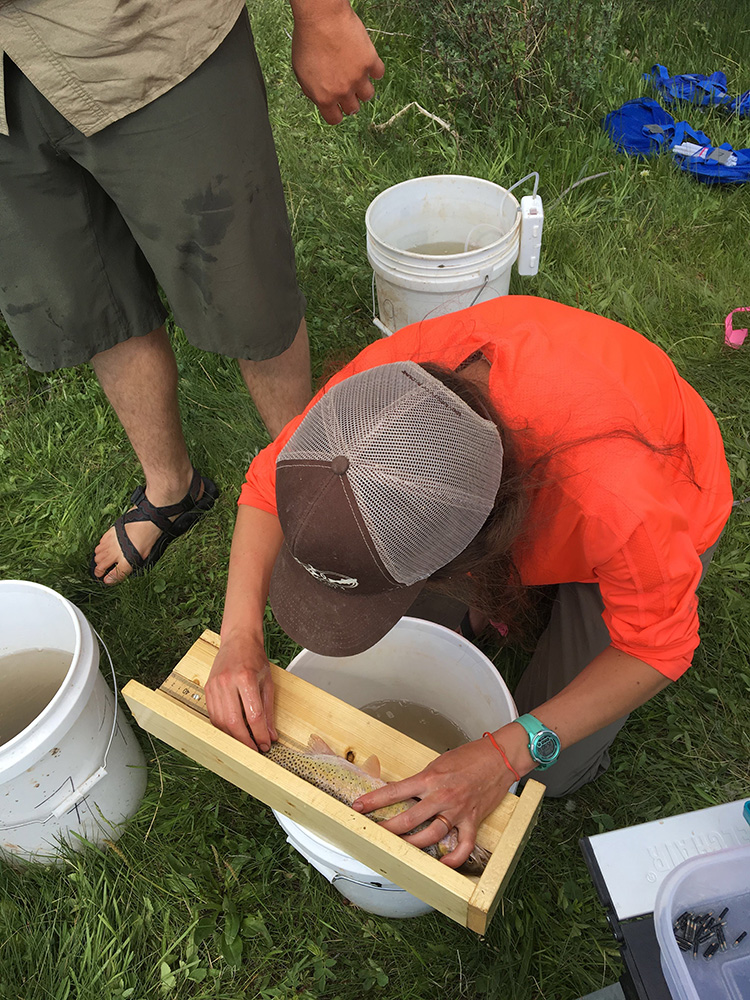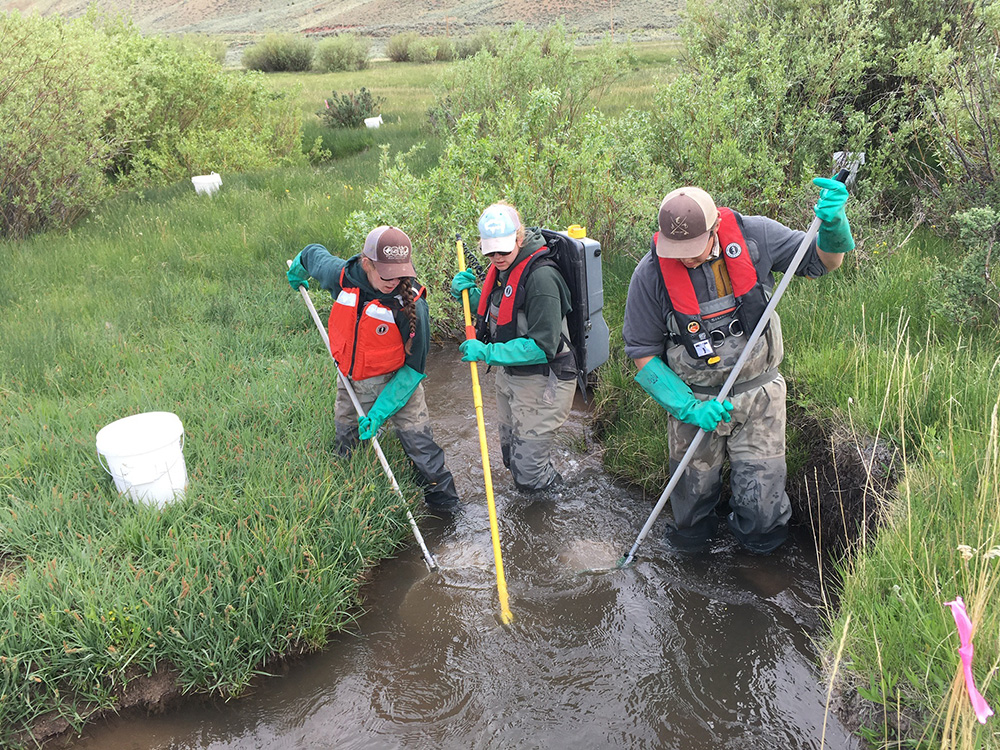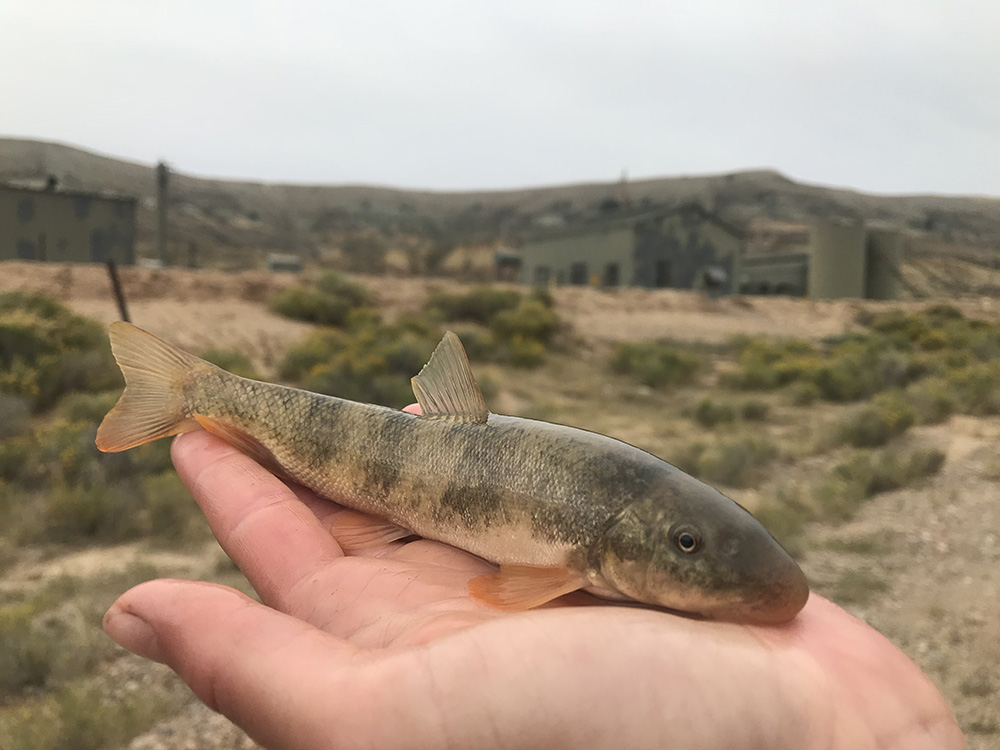Native fish populations in the Wyoming Range are heavily impacted by multiple stressors including oil and gas development, grazing, flow alteration, and climate change. Determining what drives native fish persistence in stressed ecosystems is crucial for native species conservation. Fish with greater colonization rates are more likely to persist in stressed areas. Therefore, understanding factors that contribute to colonization is crucial for species conservation. Factors that affect colonization include: barriers, available refugia, abundance, and movement rates.
Therefore, we propose to compare factors influencing colonization of mottled sculpin (Cottus bairdii) and mountain sucker (C. platyrhynchus) in the Wyoming Range.
Our objectives are to:
- Determine if mottled sculpin and mountain sucker are capable of colonizing sites post-disturbance
- Evaluate factors affecting colonization for both species
Contact
Samantha Alford , MS Student
Department of Zoology and Physiology
Wyoming Cooperative Fish & Wildlife Research Unit
Dept. 3166, 1000 E. University Avenue
Laramie, WY 82070
salford1@uwyo.edu
Annika Walters, Assistant Unit Leader
U.S. Geological Survey,
Wyoming Cooperative Fish & Wildlife Research Unit
Department of Zoology & Physiology, University of Wyoming
Dept. 3166, 1000 E University Ave
Laramie, WY 82071
annika.walters@uwyo.edu
Project Lead
Samantha Alford completed her M.S. student in the department of Zoology and Physiology at the University of Wyoming in 2020. She grew up in the Shenandoah Valley where her passion for the outdoors lead her to pursue a career in natural resources management. MORE »
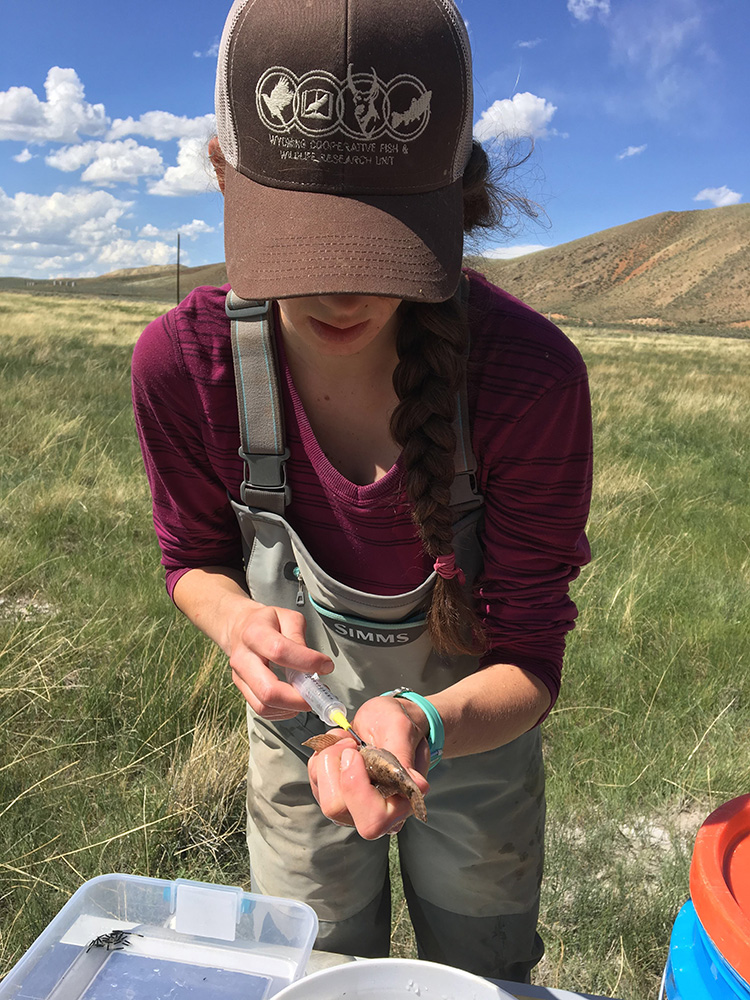
Funding & Partners
- Berry Graduate Student Fellowship
- Wyoming Landscape Conservation Initiative

